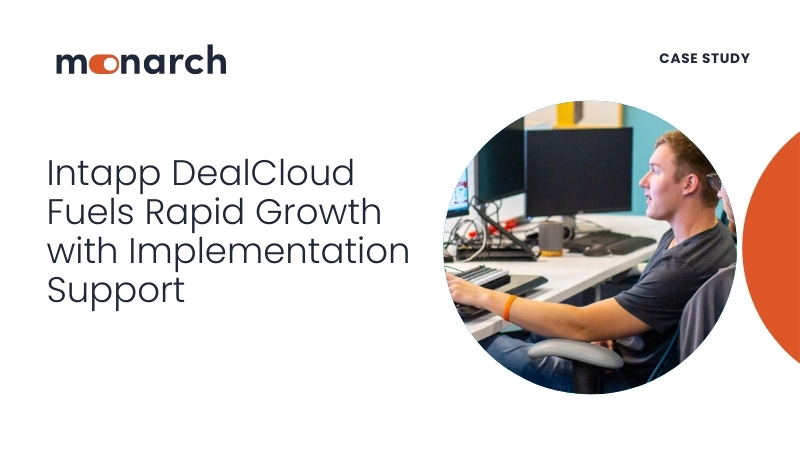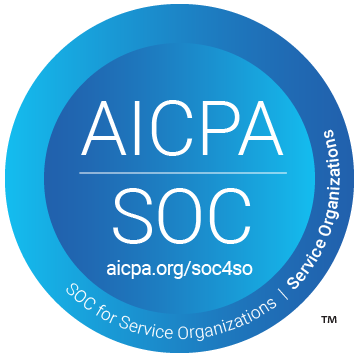What are Hidden Costs?
When it comes to implementing software solutions, companies have two options: In-house and outsourced. In-house implementation involves relying on internal resources. Outsourced implementation means hiring a third-party provider to handle the process. For many, the upfront costs of both are obvious. It’s essential to recognize the hidden costs associated with the decision. These hidden costs can have a significant impact on a company’s budget and resources.
Understanding the Hidden Costs
Recognizing and understanding these hidden costs is a must. It helps companies make strategic decisions about their implementation processes. These hidden costs include time, expertise, training, support, and overall efficiency. Failing to address hidden costs leads to financial strain and poor implementation outcomes.
Delving Deeper into Hidden Costs
In this article, we will take a closer look at the hidden costs associated with building an in-house team. By reviewing these hidden costs, we hope to help companies make informed decisions about their business strategy. Understanding the true costs involved in software implementation will empower companies to make strategic choices that align with their goals and maximize their budget and resources.
The Hidden Costs of In-House Implementation
When it comes to implementing software in-house, many SaaS company leaders think they’re making a cost-effective choice. After all, they have the resources and staff already in place, right? But what they don’t realize is that hidden costs lurk beneath the surface.
Recruiting and Hiring
Recruiting and hiring the right candidates is an extensive process for human resources. It all begins with creating a compelling job advertisement to attract potential candidates.
Once the applications start pouring in, the real challenge begins. Sorting through the resumes. Shortlisting suitable candidates. Conducting interviews. All this is time-consuming and costly. Interviews require the involvement of multiple team members. The productivity costs associated with conducting these interviews add up quickly.
Assessments, whether technical or skill-based, are often necessary to evaluate candidates’ capabilities. These assessments may require additional resources and expenses.
Salary negotiations are another significant factor in the hiring process. Balancing competitive compensation with budget constraints is a must. You want to attract top talent, and you want to ensure the financial stability of your company.
The administrative burden of preparing offer letters and contracts further adds to the cost. These documents are carefully drafted to protect both the company and the employee.
The recruitment process also takes a toll on existing staff members. They spend their time and resources screening candidates. This can impact their productivity and divert them from their core responsibilities.
Recruiting and hiring the right people for your in-house team involves significant overhead costs. The impact is both monetary and non-monetary. Companies need to deploy resources effectively for a successful and efficient hiring process.
Benefits and PTO
When it comes to full-time in-house teams, companies often provide comprehensive benefits packages. These packages usually include health, dental, and vision insurance. While these benefits are important for employees, they also pose a significant financial burden.
Along with insurance, companies also have to consider the cost implications of providing paid time off (PTO). Employees deserve time for vacations, sickness, and other leave types. While PTO is essential for employee well-being, it is an additional cost borne by the company. Offering PTO means that employees are not working and generating billable hours. This leads directly to lost revenue.
As a company leader, it is necessary to weigh the benefits of offering comprehensive packages and PTO against the financial implications. These benefits are table stakes to attract and retain top talent. But each benefit impacts the bottom line. Find a balance between providing competitive benefits and managing costs. That’s the formula for the long-term success of the business.
Onboarding Process
Onboarding new employees is an involved process for any company. Onboarding integrates employees into the company’s systems and processes. The goal is to have new hires become productive as quickly as possible. Here are the steps involved in a comprehensive onboarding process:
- Administrative setup: This includes completing all necessary paperwork, such as employment contracts, tax forms, and company policies. It is important to have a streamlined process in place to make this step as efficient as possible.
- Equipment provision: Providing new employees with the necessary tools and equipment they need to perform their jobs is essential. This includes laptops, software licenses, access cards, and any other equipment specific to their role.
- Integration into systems and processes: New employees need to be trained and onboarded into the company’s systems and processes. This includes setting up their email accounts, granting access to relevant databases and software, and familiarizing them with internal communication channels.
- Training programs: Training programs get new hires up to speed with the company’s methodologies, tools, and culture. These programs can include both classroom-style training sessions and hands-on experience.
- Buddy system or mentorship programs: Implementing a buddy system or mentorship program can greatly enhance the onboarding experience. Having an internal “buddy” who can guide and support new employees helps them acclimate to the company culture. This also fosters a sense of belonging and boosts operational efficiency.
Investing in a thorough onboarding program involves hefty upfront and ongoing costs. While the investment bears fruit when building an internal team, the price tag might be too steep for some organizations. If you can’t support a successful onboarding process, you should think twice about making new hires.
Employee Engagement
Employee engagement is an essential factor in a successful business. Keeping employees engaged and satisfied should be a top priority for any company. But cultivating engaged employees comes at a price. Here are some hidden cost centers related to employee engagement:
- All-staff company meetings: Organizing and participating in all-staff meetings is a great way to keep employees informed and engaged. It gives them a platform to ask questions, provide feedback, and feel connected to the company’s goals and values.
- Regular one-on-one meetings with managers: These meetings build relationships, address any concerns or challenges, and provide support and guidance. They help employees feel valued, heard, and motivated to perform at their best.
- Performance and compensation reviews: Regularly evaluating employee performance and providing constructive feedback is essential for growth and development. Additionally, conducting fair compensation reviews rewards employees for their hard work.
Investing in these ongoing costs shows employees that their well-being and success are important to the company. Each of these programs costs time and money. But not providing them can impact morale and retention. It’s a double-edged sword for companies watching the budget.
The Value of an Implementation Partner
Faster Implementation Turnaround
Delays in onboarding timelines can have significant costs for SaaS companies. They result in lost revenue opportunities. They also lead to extended payroll expenses without corresponding productivity. These delays have a profound impact on client satisfaction, eroding trust in the process.
To address these challenges, SaaS companies can consider outsourcing their implementation services. By doing so, they gain operational flexibility and scalability, so they can begin projects swiftly. This agility meets client expectations and maintains a competitive edge in the market.
Outsourced teams shine in the ability to handle unexpected project scope changes. They can adapt quickly without a significant impact on the project timeline.
Outsourcing also helps prevent common bottlenecks in-house teams face. Challenges such as resource allocation conflicts and internal prioritization challenges. SaaS companies can avoid obstacles and provide consistent service with an outsourced partner.
Additionally, outsourced teams often boast higher billable utilization rates compared to in-house teams. This higher efficiency translates into faster implementation and revenue realization for SaaS companies.
Quality of Service and Customer Satisfaction
Outsourcing is a popular option for SaaS companies looking to provide successful implementation services. And there’s a good reason for it. Outsourced teams often deliver more consistent quality compared to internal resources.
One of the reasons for this is their specialized skills. Outsourced teams focus solely on implementation services. It’s their core competency. This gives them unmatched expertise in this area. In contrast, in-house teams may be distracted by internal company matters. These responsibilities can impede their ability to deliver top-notch service consistently.
Outsourced teams are also less likely to get involved in non-billable internal activities. This means they can give their undivided attention to client projects and keep up billable work. This attention can contribute to a better quality of service.
Ultimately, customer satisfaction is crucial in the context of service quality. A team with a clear focus and a deep understanding of the client’s needs provides high satisfaction rates. By prioritizing the customer, outsourced teams can consistently deliver exceptional service quality.
Support for Scaling Companies
Outsourcing has become an invaluable strategic tool for companies in their scaling phases. Especially when they are gearing up for milestones like Initial Public Offerings (IPOs). Scaling companies turn to outsourcing to manage their growth without increasing their headcount.
Outsourcing implementation and other specialized services maintain agility and flexibility in their operations. This allows them to scale up or down in response to market demands or project requirements.
From a financial perspective, outsourcing offers a compelling rationale for scaling companies. It transforms fixed labor costs into variable costs. This looks good for cost structures and improving financial metrics that are crucial for IPO prospects. Think profitability and EBITDA margins.
Keeping the workforce lean is also a strategic consideration. Investors love “doing more with less.” By showing the ability to grow revenue without increasing overhead expenses, scaling companies can showcase their growth potential.
Outsourcing isn’t just about cost savings. It’s a strategic lever for growth, scalability, and operational efficiency. As scaling companies continue to navigate their path to success, outsourcing will undoubtedly play a role in helping them achieve their goals.
If you’d like to see examples of how we’ve helped SaaS companies avoid the hidden costs of a bloated in-house implementation team, download our Intapp DealCloud case study or our Pendo case study.







